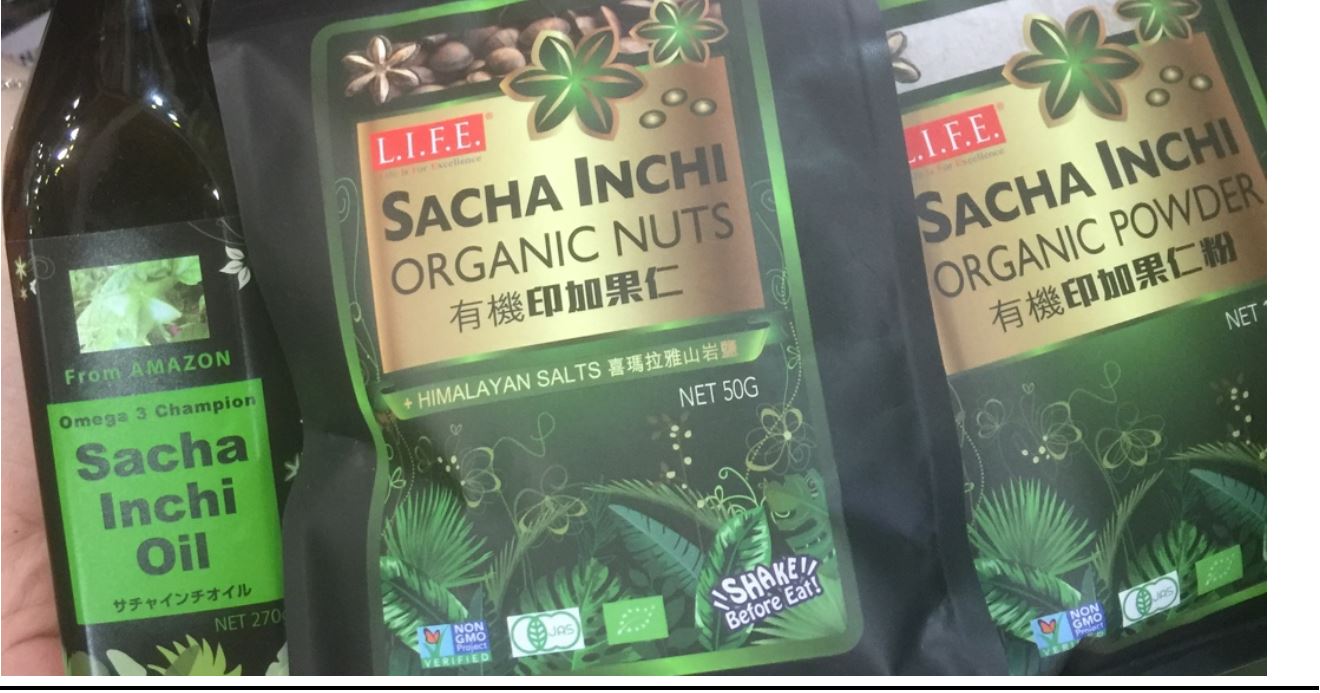
Web Developers
The Coresight Research team attended the Natural and Organic Products Asia (NOPA) exhibition in Hong Kong, which is the leading trade platform for all things natural and organic in Asia. The annual event gathered hundreds of suppliers and buyers at the Hong Kong Convention and Exhibition Center that was held August 29–31, facilitating business partnerships amongst Asia’s players in natural and organic food and beauty products, and providing business insights for overseas companies looking to enter China and Hong Kong markets. Here, we share our top takeaways from the event.
Similarly, sacha inchi or Inca Peanuts, cultivated in South America, is rich in omega-3, 6, and 9 fatty acids and protein, which makes it an ideal supplement for vegetarian diets. Because of their pleasant flavor, this seed can be consumed directly and its oil is used for massage and skincare.
These ingredients have their own therapeutic values. Lavender oil is known for its calming and soothing properties, eucalyptus oil is gentle on the skin and does not irritate it, and peppermint is an effective pain reliever which reduces inflammation and stimulates blood flow. The cooling properties of peppermint and soothing eucalyptus oil together help relieve the stuffiness and congestion that comes with stubborn cold. Vapor rub also helps alleviate pain from headache, muscle ache and joint pain.
A Bright Asia Wholesome Food Market
A wide range of natural and organic products, from food and beverages to beauty and personal care, were showcased by brands from various countries at NOPA. Of these two categories of products, food and beverages was at the forefront with many exhibitors bringing their signature food products, such as gluten-free snacks, herbal teas and probiotic drinks to the booths. Asia presents a bright market for natural and organic foods because Asian consumers are becoming increasingly health conscious. According to the US Organic Trade Associations’ Global Organic Trade Guide, Asia’s organic market is growing rapidly and is expected to increase at a minimum rate of 10% every year till 2020. NOPA’s newsletter states that China and India are the fastest growing markets for organic products in Asia with the former being the current fourth-largest organic products market globally; it is estimated that sales of organic products in China will grow by more than 20% annually through 2020 while India’s organic trade will grow by more than 25% annually and reach $1.36 billion in the same year. Along with gluten-free products and probiotics beverages that have been popular wholesome foods for years, the demand for food and beauty products made using natural ingredients is also growing. Many of the ingredients used in organic food products are superfoods by themselves and can be consumed directly. Chia seeds, for example, are rich in omega-3 fatty acids, fiber, antioxidants and calcium, and complement oatmeal and beverages well to fulfill one’s daily nutritional needs. Chia seeds
Source: iStock
Chia seeds
Source: iStock
Similarly, sacha inchi or Inca Peanuts, cultivated in South America, is rich in omega-3, 6, and 9 fatty acids and protein, which makes it an ideal supplement for vegetarian diets. Because of their pleasant flavor, this seed can be consumed directly and its oil is used for massage and skincare.
 Sacha inchi oil, sachi inchi organic nuts, sachi inchi organic powder displayed at NOPA 2018
Source: Coresight Research
Sacha inchi oil, sachi inchi organic nuts, sachi inchi organic powder displayed at NOPA 2018
Source: Coresight Research
Organic Skincare Are in Demand in Asia
Asian markets are also witnessing a rise in the demand for organic skincare products with the demand for natural beauty products and those with “clean” labels rising by the day. Vapor rub, for example, was one of the innovative skincare products displayed at this year’s NOPA. Vapor rub is used as a topical ointment which is rubbed on the chest for relief from cold, cough and chest congestion. Made with natural ingredients, which include eucalyptus, lavender oils and peppermint, this rub does not contain petroleum jelly. Vapor rub
Source: Skin Dewi
Vapor rub
Source: Skin Dewi
These ingredients have their own therapeutic values. Lavender oil is known for its calming and soothing properties, eucalyptus oil is gentle on the skin and does not irritate it, and peppermint is an effective pain reliever which reduces inflammation and stimulates blood flow. The cooling properties of peppermint and soothing eucalyptus oil together help relieve the stuffiness and congestion that comes with stubborn cold. Vapor rub also helps alleviate pain from headache, muscle ache and joint pain.
Entering China and Hong Kong Markets
Hong Kong has always been a gateway to China for foreign companies and brands. According to data released by InvestHK—the Hong Kong government department responsible for bringing FDI into the country—food and beverages imports and consumer expenditure on these imported products in Hong Kong rose by 28% and 41% respectively in the period 2011–16. With a population of around 70 million in the region’s Greater Bay Area which is currently under key development as per China’s national plans, Hong Kong will play a more important role in connecting foreign companies to the Zhujiang delta region in the near future. Also, it is easy to enter the Hong Kong market as the first step towards establishing a foothold in Mainland China. As Sindy Wong, Head of Tourism and Hospitality of InvestHK, shared at NOPA, it takes only seven working days and a registration fee of HK$195 (US$25) to get official approval for operating as a food importer or distributor in Hong Kong provided the applicant company complies with other requirements, such as the relevant regulations for food and hygiene. Brands can also opt for partnerships with local supermarket chains to expand their brand exposure in Hong Kong. For brands seeking to enter China, availability of local support is of particular importance because the standards for food material in China are different from those in the US and Europe. Adherence to these quality standards is crucial and when brands tie up with local organizations they also get language assistance to localize their products for Chinese consumers because all product information is required to be displayed in Simplified Chinese on the packaging. Given these factors, it is common for foreign brands go with multi-channel distribution rather than relying on a sole proprietor to penetrate into the Chinese market with its wide variety of provincial cultures and norms.- For more information on ways to enter China market, look out for our upcoming reports that discuss methods for market entry.